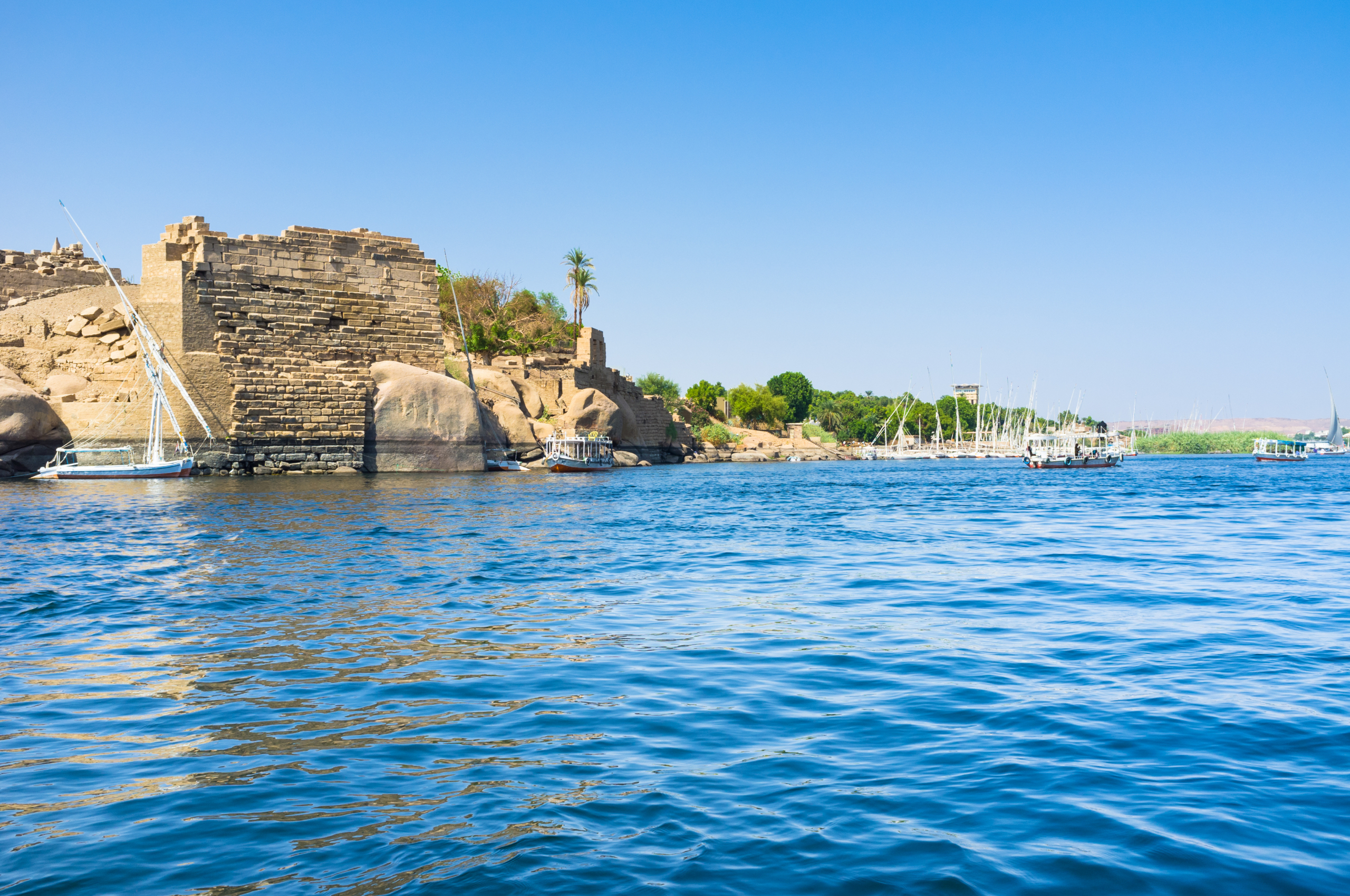Today we learned about the Nubian people, an ethnolinguistic group who live in southern Egypt and northern Sudan. Darker skinned than their Egyptian brethren, yet lighter-skinned than those in Sudan, they speak a common language, and they share a strong culture that has remained distinct through the centuries. 
Our guide took us to her village on Elephantine Island, where we encountered many locals; and then she took us into her home where we met her father, mother and sisters. From them we learned that the Nubians date to the earliest Egyptian civilization, and their influence can be found in some of the most important monuments of the region — such as the colossal sculptures of Ramses II, who is depicted with Nubian features.
In general, the Egyptians accepted the Nubians into their culture; so it remained strong through the centuries. But during the Islamic conquests beginning here in 642 AD, there were attempts to erase their way of life: They were required to practice Islam, and were forbidden to write their language. As a result, nearly all Nubians are Muslim today, and their language, while still spoken, is no longer written. 
We later traveled to the Nubian Museum of Aswan, where we learned that the biggest threat to the Nubian people came in the 1960’s when Egypt dammed the Nile. It submerged the homes of most Nubians north of Aswan, displacing 60,000 people. While most were relocated to areas around Kom Ombo, their close-knit culture was fractured.
Happily, our guide’s home was not affected, as their village is located on Elaphantine Island in the middle of the Nile in Aswan. Her village was full of happy people, who were contentedly carrying on the way of life established by their ancestors centuries ago.

